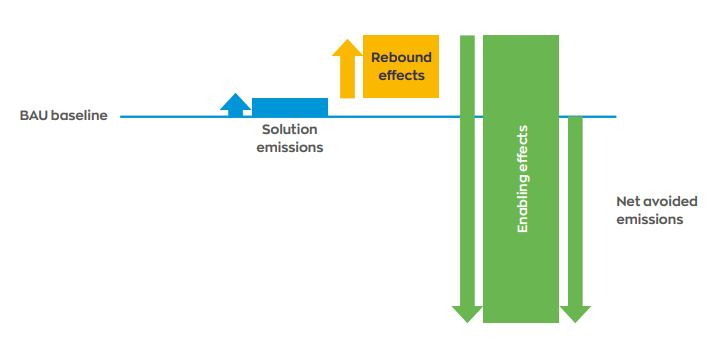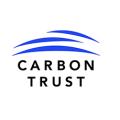Low carbon leaders are doing more than reducing their own emissions, they are developing innovations (including technologies, products, services and business models) that will help society reduce emissions (avoided emissions - see box below). The disruptive innovations that they are working on are crucial elements in a net zero development path, and their development is becoming a growing priority.
Just this week, Massamba Thioye1 announced on behalf of the UNFCCC the setting up of an International Innovation Hub to identify and support the development of 100,000 such innovations.
The Net-Zero Compatible Innovations Initiative (NCI) has been focusing on this area for the past two years. Established by Mission Innovation (MI) – a global multi-government initiative working to reinvigorate and accelerate global clean energy innovation – the NCI aims to make it easier for governments, companies, and investors to identify, support, and fund the next generation of innovators working on 1.5 °C compatible innovations, of which avoided emissions innovations are a key aspect. The NCI was proposed by Sweden and adopted into the MI Action Plan at MI-3 (the third Mission Innovation Ministerial). The work is led and coordinated by RISE Research Institutes of Sweden, and the Carbon Trust is providing methodological and other support to the initiative.
A thousand potential innovations have been assessed and are showcased on the NCI website, and MI member countries have embraced the initiative. For example, innovation incubation centres have been established in Chile and India to support and foster companies with net zero compatible innovations and Sweden has already identified 1GtCO2/year potential avoided emissions by 2030 from Swedish climate innovations.
However, having a robust and coherent way to measure, assess, and compare the current and potential impact of avoided emissions innovations is crucial in order to unlock funding and accelerate their uptake. Which is why the NCI is underpinned by an Avoided Emissions Framework (AEF) which brings together a decade of work on methods to assess avoided emissions in order to provide over-arching principles and best practice guidance.
A summary of the methodology
The Carbon Trust led the development of the Framework in 2018. It sets out a clear methodology to calculate the avoided emissions of existing or future solutions. It is based on comparing the greenhouse gas emissions from a business-as-usual baseline scenario with emissions from a solution-enabled scenario, to highlight the emission reductions that can be achieved by implementing such a solution.
Emissions from the following four categories need to be determined in order to estimate net avoided emissions:
- Business-as-usual baseline emissions: emissions from a baseline scenario in which the enabling solution has not been deployed
- Enabling effects: avoided emissions delivered by the implementation of the solution
- Direct solution emissions: life cycle emissions of the enabling solution
- Rebound effects: increases and decreases in baseline emissions either directly or indirectly due to the implementation of the solution
Figure 1: How categories’ emissions are combined to calculate net avoided emissions

Source: Mission Innovation, The Avoided Emissions Framework (AEF), 2020
What’s new to the Framework
An updated AEF has just been published at MI-5 – the 5th Mission Innovation Ministerial meeting in Saudi Arabia. It expands on previous versions, capturing inputs and comments from several stakeholders and building on the experience gained in assessing avoided emissions for a range of innovations as part of the NCI.
A key update is the expansion of guidance on the different attribution/allocation approaches that can be implemented to effectively assign avoided emissions between different technologies involved in delivering an enabling solution.
The framework provides an overview of the following five allocation methods, highlighting the pros and cons of each and outlining practical scenarios where they could be applied:
- Accept double counting
- Allocate all avoided emissions to fundamental solution
- Allocate equally between different elements
- Financial cost or value attribution
- Stakeholder consensus
The update also includes a new section on assessing the avoided emissions potential of future innovations at different Technology Readiness Levels (TRLs). The TRL of a technology acts as a good indicator of its degree of maturity which, in turn, can provide insights on several key factors impacting the avoided emissions calculations, including:
- The technology’s probability of success
- The magnitude and timing of achievable emission reductions
- Potential changes in the technology’s development based on an avoided emissions assessment
- Data quality and transparency considerations
The section explores the impact of a technology’s TRL on each of these and highlights the practical implications for the calculation approach to be adopted.
In addition to these two main updates, the Framework now includes references to ISO GHG-related standards and highlights how the relevant ISO and GHG Protocol standards differ from the AEF. The Appendix has also been expanded to include additional examples of relevant initiatives.
Further developments
The AEF is the most comprehensive guidance document for assessing avoided emissions in existence, with extensive referencing of other related initiatives. It will also continue to be expanded and adjusted to ensure it can effectively support an increasing number of innovations delivering avoided emissions.
Looking ahead, further valuable guidance is expected shortly, including three white papers looking at the wider applicability of the AEF to other reporting frameworks. They will address how the reporting and assessment of avoided emissions within the Task Force on Climate-related Financial Disclosures (TCFD), the CDP and the EU Sustainable Finance Taxonomy could benefit from the principles and methods described within the AEF.
A practitioner’s guide, giving more detailed guidance and support for those engaged in the assessment of innovations, is being developed for the end of 2020. This will accompany a reporting tool to provide more consistency when assessing innovations that are submitted to the NCI.
Undoubtedly, the growing focus on avoided emissions solutions is a hugely positive and necessary step if we are address the challenge of climate change and achieve the ambitions of the Paris Agreement. The AEF, as part of the NCI, has the potential to support greater levels of innovation, unlocking growth and new revenue opportunities at the same time.
What are avoided emissions?
The overall concept of avoided emissions is that a solution (product or service) enables the same function to be performed with significantly less greenhouse gas (GHG) emissions.
Examples include low-temperature detergents, teleconferencing services, business models that reduce transport emissions, and devices delivering significant energy efficiencies.
The method of measuring avoided emissions is to compare a baseline scenario without the enabling solution with a scenario using the enabling solution, where the baseline represents the ‘business as usual’ (BAU) scenario.
The Carbon Trust has been at the forefront of developing methodologies for measuring avoided emissions. We authored the Avoided Emissions Framework for Mission Innovation’s Net Zero Compatible Innovations Initiative, and we have worked with a number of international telecommunications companies to assess their avoided emissions (including: AT&T, BT, Telefónica, Telia, Verizon, Vodafone).
In December 2019, we worked with the GSMA on a joint report – The Enablement Effect – that examined the enabling role that mobile telecommunications are having on reducing carbon emissions across the economy.
1. Sustainable Development Mechanism Program UNFCCC & Co-chair of Climate Change Coalition



